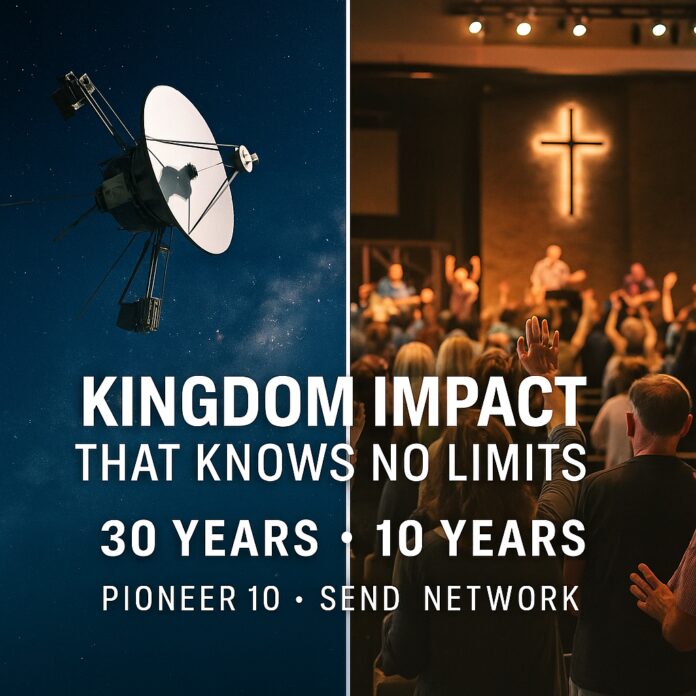
In March 1972, NASA launched Pioneer 10, its first mission to our solar system’s outer planets. The excursion, initially designed to last 21 months, ended up spanning three decades. The results far exceeded expectations, notching a series of firsts for an uncrewed spacecraft. By 1983, Pioneer 10 had flown beyond Mars, Jupiter, Saturn, and Neptune—all firsts.
Even so, the mission didn’t go perfectly. A litany of unexpected issues required in-flight course corrections. Yet, the mission moved forward until 2003, when Earth received a final signal from Pioneer 10—from 7.6 billion miles away. The progress of that 30-year space initiative changed history, laying the groundwork for the even greater success of Voyager 1.
In 2015, a collection of like-minded churches called the Southern Baptist Convention (SBC) formalized its own pioneering mission. Called Send Network, its goal was to accelerate the reach and impact of church planting in North America like never before. In 2025, the effort is marking 10 years of kingdom impact.
Thanks to God’s grace and the dedication and sacrifices of his people, we can celebrate many blessings. Through Send Network:
- Tens of thousands of congregations have made generous financial contributions and commissioned faithful leaders.
- Thousands of missionaries have said yes to God’s call.
- Thousands of churches have been planted across North America.
- The good news of Jesus’ gospel has changed countless lives, families, and communities.
Lessons From the Field
SBC and Send Network leaders are incredibly grateful for our small role in growing God’s kingdom. Amid all the reasons to celebrate, we’ve also taken time to reflect. During the past decade, we have learned valuable lessons about how to best attain the goal of church multiplication.
Send Network has identified three guidelines that best position Southern Baptists and other Christians to share in God’s mission:
1. Essentials should drive planter development.
We have homed in on several key characteristics that serve as a framework for faithful, effective church planters. To multiply churches, first you must multiply leaders. That’s why the following nine essentials shape the entire Send Network planting process:
- The Heart: Does the church planter walk with God?
- Relationships: Is the planter cultivating healthy relationships?
- Calling: Is the planter confident in calling?
- Theology: Is the church planter theologically grounded and gospel-centered?
- Mission: Does the planter regularly do the work of evangelism and disciple-making?
- Teaching: Does the planter handle God’s Word faithfully?
- The Church: Does the planter love the church?
- The Nations: Does the planter prioritize global engagement?
- Practical Leadership: Does the planter have the practical leadership skills to plant a church in the desired location?
No planter enters the process fully formed, of course. But these qualifications serve as a biblical target for planter development. The list helps clarify the goal as churches create localized church-planter residencies and growth plans.
These essentials interact in a church planter’s life through Send Network’s Planter Pathway. This path, which plots the first five years of a church-planter’s journey, includes a series of mile markers: Prepare, Assess, Care, Equip.
The Prepare stage guides “sending” churches as they disciple up-and-coming church planters and teams. Assess thoroughly examines the calling and competency of church-planting missionaries, through a process that includes an assessment retreat. Our ongoing Care strategy strives to ensure that every missionary is seen, known, and resourced for health and longevity. Finally, the Equip stage develops church planters in Send Network’s Missionary Task: engaging the city with the gospel, making disciples, and planting a local church.

